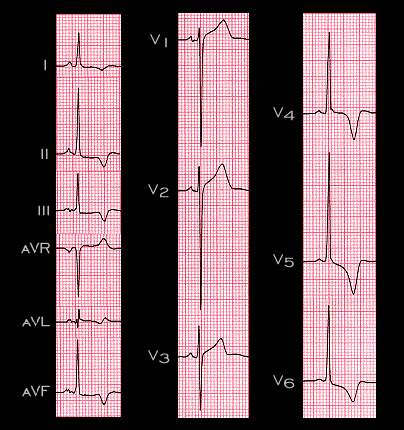
An even more dramatic example of giant T wave inversion may occur in patients with the hypertrophic cardiomyopathies. This ECG is from a 22 year old male with asymmetric hypertrophy of the interventricular septum and apex. The marked increase in QRS voltage in the chest leads, although at the very upper limits of normal for a male of this age, probably reflects the ventricular hypertrophy.
